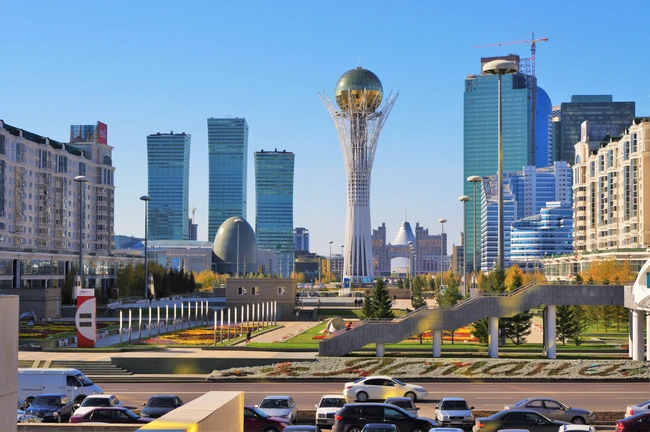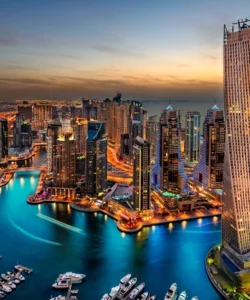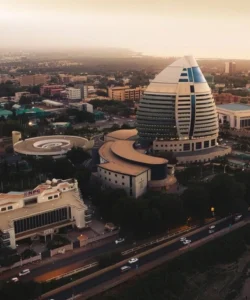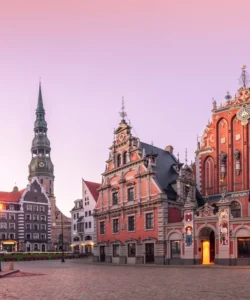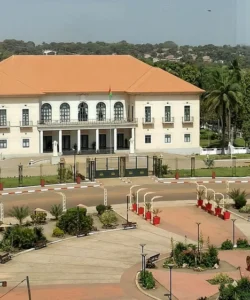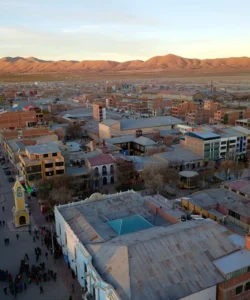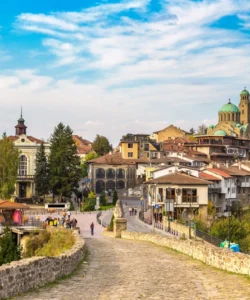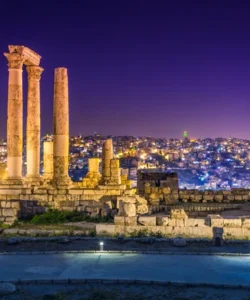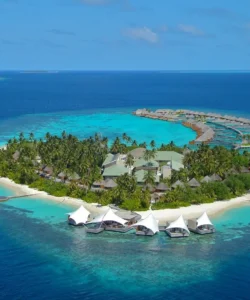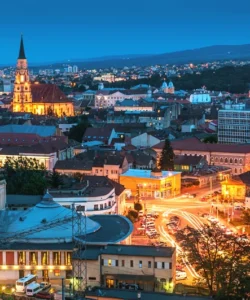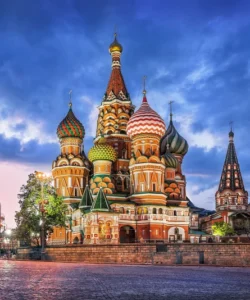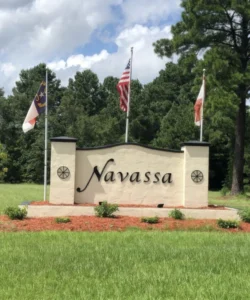Kazakhstan, the largest country in Central Asia and the ninth largest in the world, offers a fascinating blend of nomadic heritage, modern cities, and diverse natural landscapes.
Area: Kazakhstan covers a vast territory of 2,724,900 square kilometers. It borders Russia to the north and west, China to the east, and Kyrgyzstan, Uzbekistan, and Turkmenistan to the south. It is the largest landlocked country in the world, with a diverse landscape including deserts (44%), semi-deserts (14%), and forests (5%). It also has numerous rivers and lakes, including parts of the Caspian and Aral Seas.
Population: As of June 1, 2025, the population of Kazakhstan has grown to 20,370,672 people. The urban population is larger than the rural population.
Language: The official state language is Kazakh. Russian is also an official language of “interethnic communication.” The government is working towards promoting trilingualism in Kazakh, English, and Russian among younger generations.
Currency: The currency of Kazakhstan is the Tenge (KZT).
Religion: Kazakhstan is a multiethnic and multi-religious state. According to the 2021 census, 69.31% of the population is Muslim, and 17.19% is Christian (with Orthodox Christianity being the largest Christian denomination).
Capital: The capital city of Kazakhstan is Astana (also known as Nur-Sultan).
Major Cities: Besides Astana, other significant cities include:
- Almaty: Known as the cultural heart of Kazakhstan.
- Shymkent
- Aktobe
- Karaganda
- Taraz
Attractions & Wonders: Kazakhstan boasts a wide array of natural and man-made attractions:
- Almaty: Zenkov Cathedral, Panfilov Park, Green Bazaar.
- Astana: Bayterek Tower, Palace of Peace and Reconciliation, Khan Shatyr Entertainment Centre.
- Charyn Canyon: Often compared to the Grand Canyon, offering breathtaking views.
- Lake Kaindy: Known for its unique submerged forest.
- The Caspian Sea: Eastern shore offers beaches and water sports.
- Kolsai Lakes: A trio of stunning lakes in the Tien Shan mountains, ideal for hiking.
- Bektau-Ata Tract: A Martian-like volcanic area near Balkhash.
- Shaitankol Lake: A mysterious lake near Karkaralinsk.
- Boszhira Tract: A snow-white flatland with sharp rocky peaks in Western Kazakhstan.
- Singing Barkhan: A 150-meter-high sand dune that produces organ-like sounds on hot, dry days.
- Yazevoye Lake: Located in Eastern Kazakhstan.
- Altai Mountains: Picturesque landscapes and unique flora and fauna.
- Saryarka (Kazakh Uplands): A vast steppe zone with rolling plains, a UNESCO World Heritage site.
Architecture: Kazakhstan, particularly Astana, showcases modern and futuristic architectural designs, alongside historical and traditional structures:
- Khan Shatyr Entertainment Centre (Astana): A massive tent-like structure.
- Mausoleum of Khoja Ahmed Yasawi (Turkistan): A stunning historical monument, often considered a “second Mecca” for Muslims.
- Mausoleum of Arystan Bab (Turkistan): An important precursor to the Yasawi Mausoleum.
- Ascension Cathedral (Almaty): A world-famous wooden church built without nails.
- Beket Ata Underground Mosque (near Aktau): A mosque carved into rock.
- Hazrat Sultan Mosque (Astana): A grand and significant mosque.
- Kazakhstan Central Concert Hall (Astana): A striking venue for cultural events.
- Baiterek Tower (Astana): An iconic symbol offering panoramic city views.
- National Museum of the Republic of Kazakhstan (Astana).
- Palace of Peace and Reconciliation (Astana).
- Presidential Palace (Astana).
- Kazakhstan Hotel (Almaty): A notable architectural example from the 20th century.
- Yurt: The traditional portable tent-house of Kazakh nomads, a significant cultural and architectural element.
Roads: Road conditions vary. They are generally good in and around major cities but can be poorly maintained and dangerous in rural areas due to potholes and malfunctioning or absent traffic lights. The total road network is 96,167 km, with 87% being asphalted roads. Road traffic moves on the right.
Hotels: The hotel industry in Kazakhstan is growing. As of June 2024, there were 2,237 hotels. A variety of hotels are available, from one-star to five-star establishments, with five-star hotels being present in 10 regions and averaging 55,500 Tenge per night for single rooms.
Restaurants: Major cities like Astana and Almaty offer a diverse culinary scene. Popular restaurants include:
- Line Brew Astana (Astana): European, Steakhouse.
- Qazaq Gourmet (Astana): Kazakh Fusion.
- Gakku (Almaty): Kazakh Fine Dining.
- Saksaul (Astana): Central Asian.
- Navat (Almaty): Uzbek, Kazakh.
- Ocean Basket (Astana): Seafood, Mediterranean.
- Del Papa (Astana & Almaty): Italian.
- Zheka’s Doner (Almaty): Fast Food, Middle Eastern.
- Tiflis (Astana): Georgian.
- Korean House (Almaty): Korean.
Cuisine: Traditional Kazakh cuisine reflects its nomadic heritage and is heavily based on meat and dairy products. Key dishes include:
- Beshbarmak: The national dish, made from boiled horse or beef meat served over flat noodles with onion sauce.
- Kazy (Qazı): A traditional sausage made from seasoned horse meat.
- Shashlik: Skewered and grilled meat.
- Kuurdak: Fried meat and potatoes.
- Plov (Palau): A rice dish cooked with lamb or beef, carrots, and garlic.
- Manty: Steamed dumplings filled with meat.
- Lagman: Uyghur-style noodle soup with beef or lamb and vegetables.
- Baursak: Fried dough balls, often served with stews or grilled meats.
- Lepeshka: Round, flatbread baked in a clay oven.
- Zhalpyak: Kazakh-style sweet pancakes.
- Tandoor Samosa: Triangular pastries baked in a clay oven, typically filled with minced meat or spiced potato.
Annual Travel: Kazakhstan’s tourist arrivals are projected to reach nearly 11.8 million by 2028, up from approximately 9.8 million in 2023, representing a steady annual growth rate of 3%. The country has seen consistent growth in tourism demand, increasing by 2.2% annually since 2001. In 2022, 8.6 million people visited the country.
